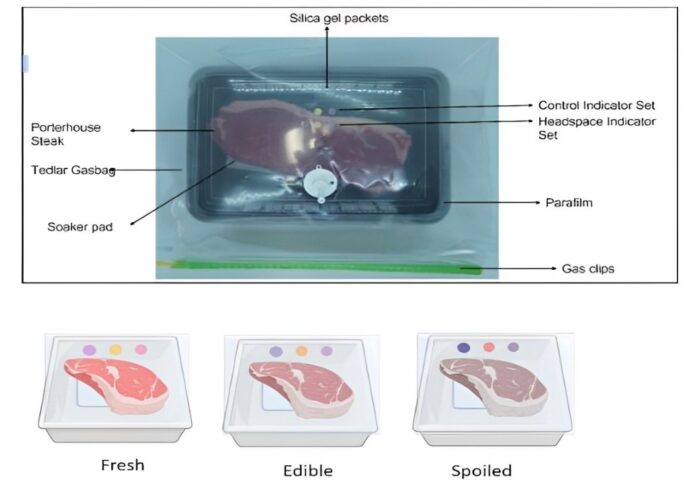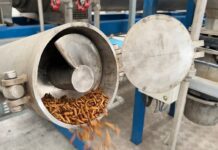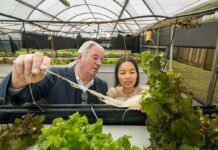
Patches that change colour to indicate the freshness of raw meat in sealed refrigerated products could soon hit supermarket shelves, making it easier for shoppers to determine if their meat is still good to eat and helping to reduce food waste.
Developed by researchers at Monash University, these on-pack colour indicators are made from natural plant materials and show the real-time freshness of beef, potentially replacing traditional “best before” dates.
The research team, led by former Monash University PhD student Debarati Bhadury (now at the University of Washington in Seattle), said this innovation could significantly decrease the amount of meat discarded due to reliance on conservative use-by dates.
The research demonstrated that the indicators, when applied to the inside of transparent packaging film, consistently changed colour in response to rising pH levels caused by bacterial growth, such as E. coli, on beef porterhouse steaks. This change accurately reflected the meat’s freshness.
Machine-readable versions of these indicators could automate various aspects of the supply chain and retailing, including dynamic pricing based on freshness. The technology is also likely adaptable to other fresh foods.
The colour-changing patches were co-developed by Dr Joanne Tanner of Monash University’s Department of Chemical and Biological Engineering, who supervised the research alongside Professor Kellie Tuck of the School of Chemistry.
The patches are made from a combination of nanocellulose and dyes derived from vegetables like red cabbage and black carrot.
“Colour-changing indicators on the package are a way of giving consumers real time information that meat is still fit for consumption,” Dr Tanner said.
“By contrast, a Best Before date merely represents a conservative estimate of how long the packaged meat will remain usable and is not an actual gauge of freshness. It is based on a series of worst-case assumptions about its handling and refrigeration through the supply chain,” he explained.
The colour indicator system could also integrate with smartphone apps, providing consumer advice on optimal ways to cook and prepare meat based on its freshness.
“Smartphone integration providing advice on food preparation is a real possibility using this freshness indicator. For example, the meat could still be consumed but should be cooked for a longer period rather than eaten rare,” Dr Tanner added.
The study also showed that bacterial counts varied on steaks with the same “best before” date, further underscoring the value of an on-pack freshness indicator.
Dr Tanner noted that using a combination of two or more colour-changing sensors would be ideal for consumers, accommodating individual differences in colour vision.
The next phase of the research will explore other anthocyanins that change colour across different pH ranges, potentially extending the technology to a variety of fresh foods.
This study, published in the journal Food Quality and Safety, received support from Meat & Livestock Australia.



















